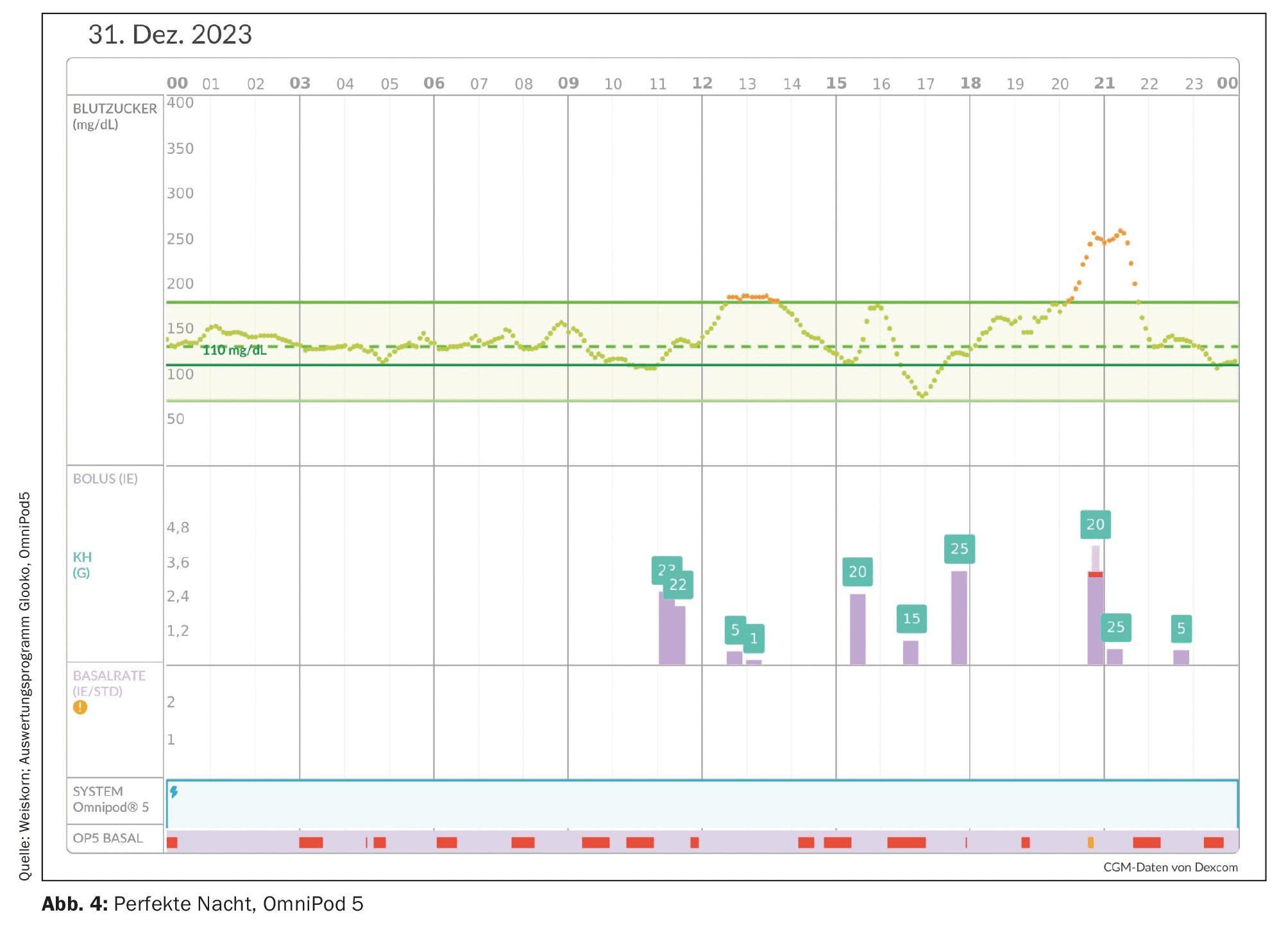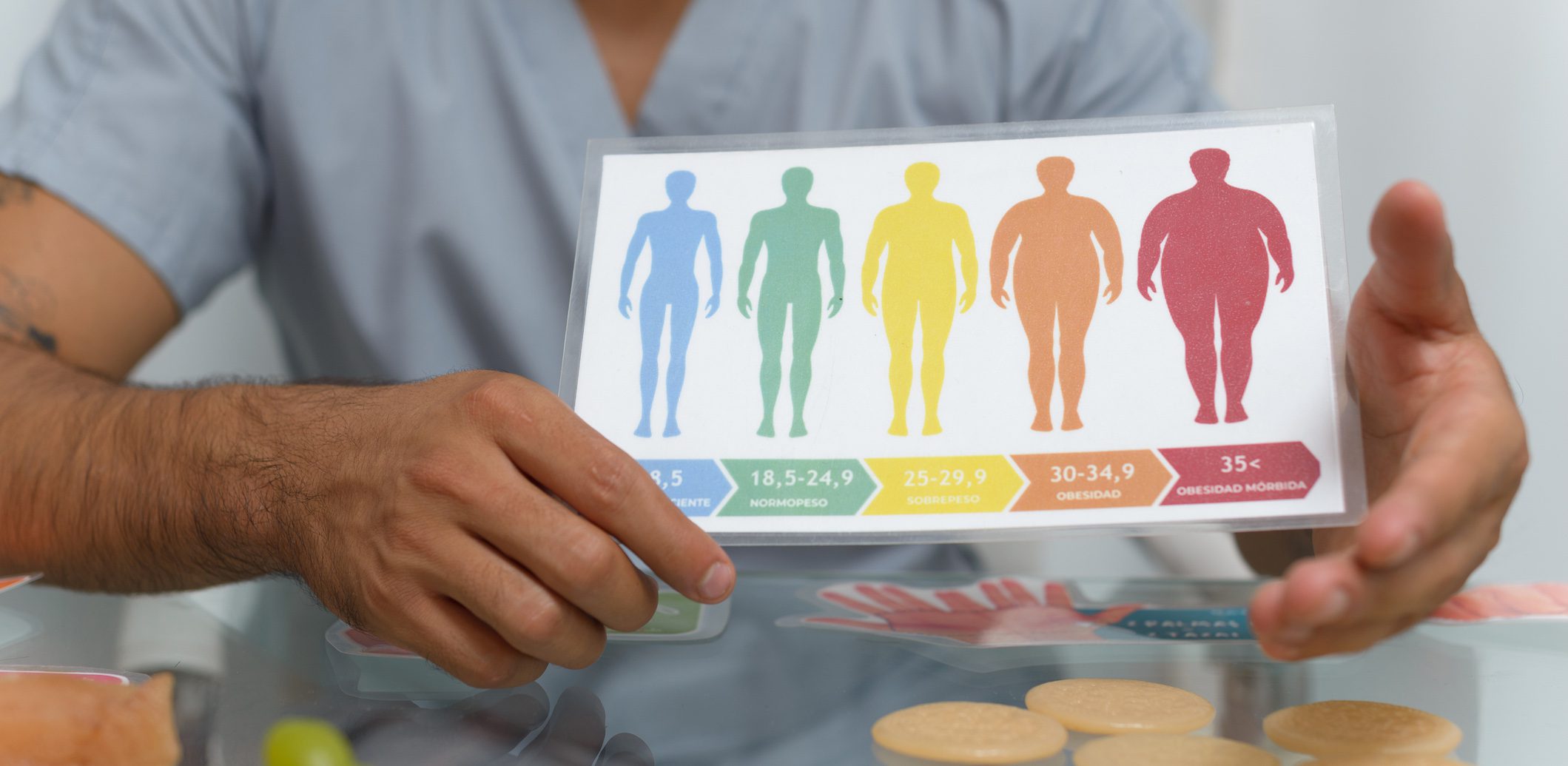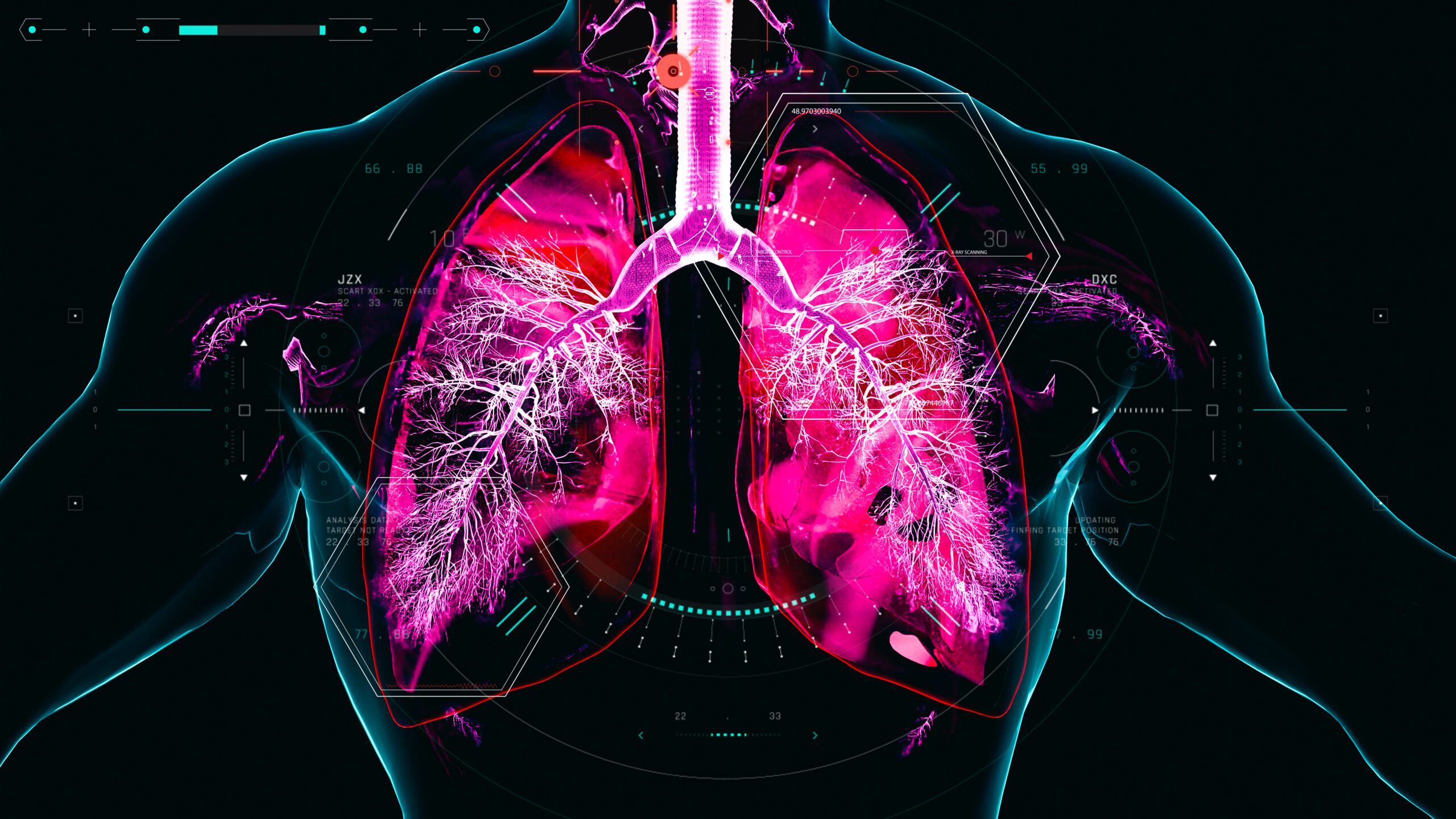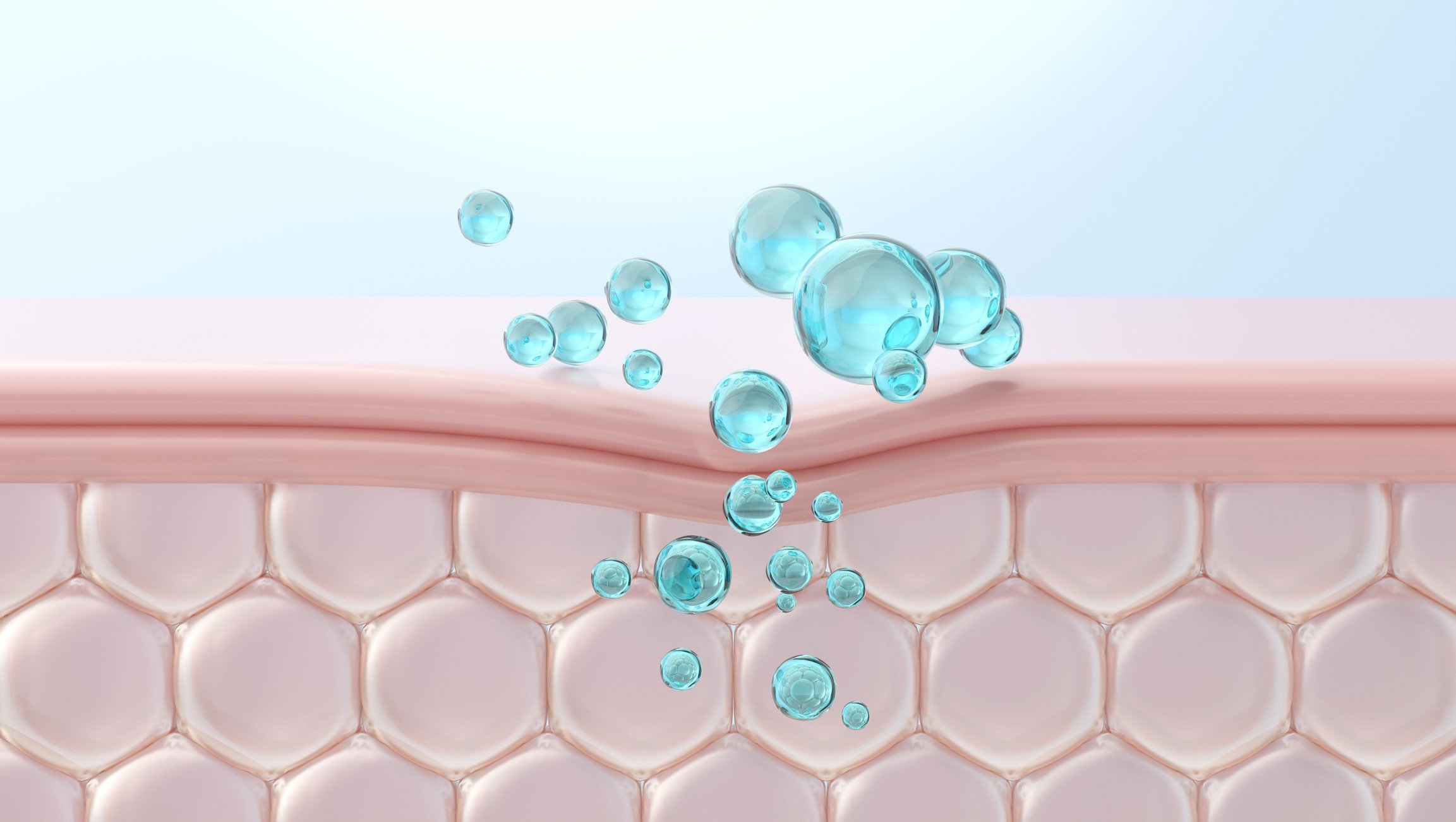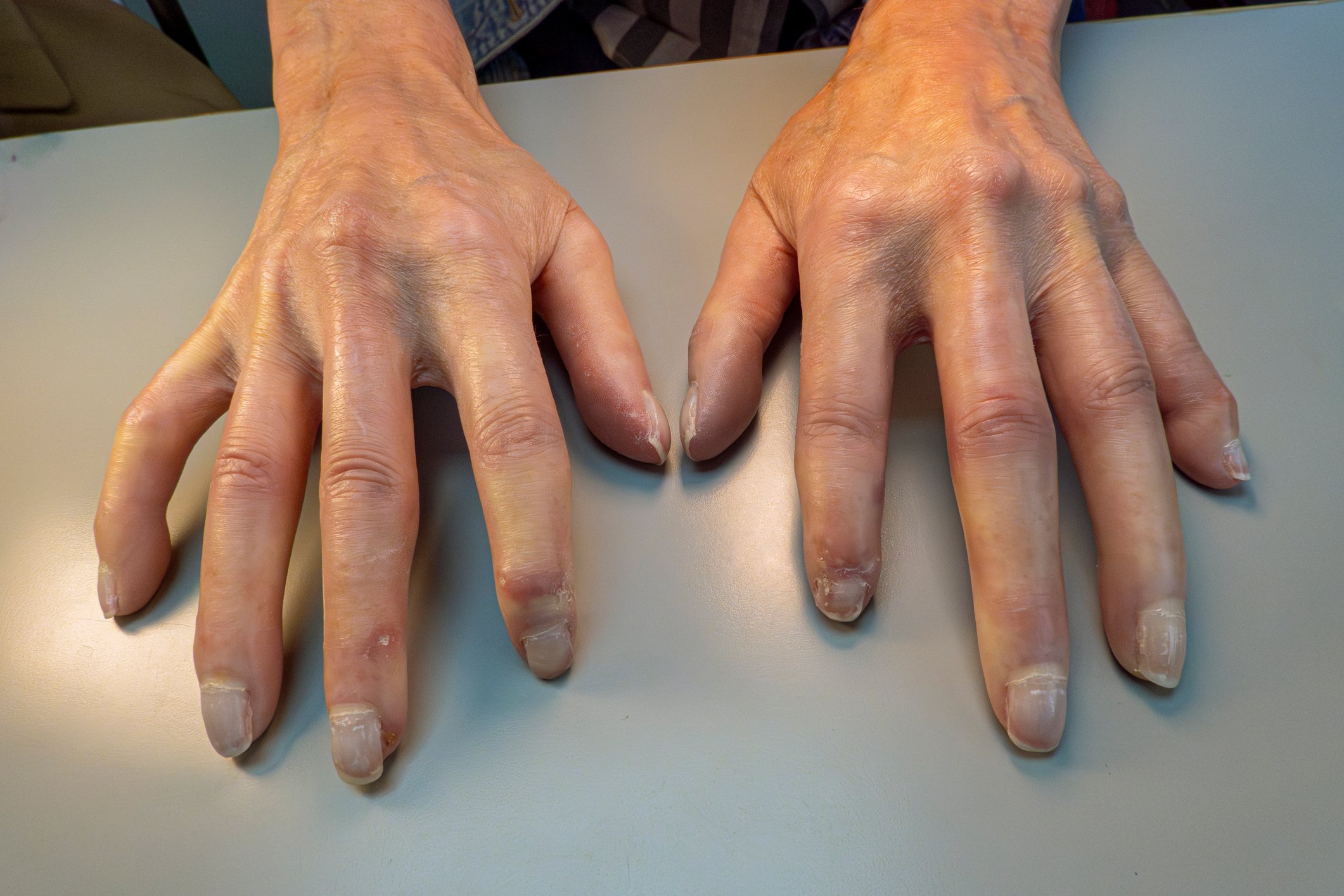Type 1 diabetes is one of the most common metabolic diseases in children and adolescents. A diagnosis of type 1 diabetes is a considerable burden for those affected and their families – especially when they are young. Further development of drug-based insulin and immunomodulatory therapies and increasing advances in technology mean that ever more innovative treatment options are available to achieve internationally defined target values. The most modern therapy currently available is the coupling of sensor system, control algorithm and insulin pump, the AID system (automated insulin delivery).
Type 1 diabetes is one of the most common metabolic diseases in children and adolescents. There are currently (2021) 26,642 people living with type 1 diabetes in Switzerland, with an incidence of around 20 new cases per 100,000 children and adolescents <16 years. The average age at diagnosis was 8.8 years (data courtesy of Daniel Konrad, Swiss Society for Pediatric Endocrinology and Diabetology). Rising incidences in children and adolescents have been observed for years. It is assumed that the number of cases will double every 20 years. The children who fall ill are getting younger and younger, so that the cumulative pathological glucose load and the risk of cardiovascular secondary diseases are correspondingly greater. According to statistical estimates, the loss of life expectancy for diabetes manifesting before the age of 10 is around 17 years, depending of course on the metabolic metabolic control [1,2].
You can take the CME test in our learning platform after recommended review of the materials. Please click on the following button:
Especially since the DCCT study [3], it has been known how important it is to keep glucose levels within a defined target range in order to avoid subsequent complications. The diagnosis of type 1 diabetes is therefore also a considerable burden for those affected and their families – especially in early childhood. Further development of drug-based insulin and immunomodulatory therapies and increasing advances in technology mean that ever more innovative treatment options are available to achieve internationally defined target values. The most modern therapy currently available is the coupling of sensor system, control algorithm and insulin pump, the AID system (automated insulin delivery) .
Development of diabetes technology
Insulin pump therapy (CSII) has been routinely used in adult medicine since the 1980s. In the 2000s, it increasingly established itself as a standard therapy for children and adolescents. The further development of glucose sensors enabled sensor-assisted insulin pump systems, i.e. the coupling of sensor and insulin pump. Initially, it was possible to interrupt the insulin supply in the event of hypoglycemia (LGS, Low Glucose Suspend) (PARADIGM VEO), later a predictive, anticipatory interruption of insulin delivery in the event of imminent hypoglycemia (PLGM, Predictive Low Glucose Management) (MiniMed 640G) [4,5] Depending on the system, the insulin supply is interrupted for 5-120 minutes until a defined glucose target value is safely reached again. In recent years, AID systems have taken insulin therapy to the next level of automatic control.
At the same time, ambitious people with type 1 diabetes (“Looper Community”, “#WeAreNotWaiting”), who did not want to wait for commercially available systems, developed open source algorithms and building instructions themselves, coupled them with conventional insulin pumps and CGM systems and converted them into semi-automated systems. These open source or do-it-yourself (DIY) systems are subject to a continuous improvement process by users, lead to good to very good results and have promoted the further development of commercially approved systems [6,7]. When using these DIY systems, however, it must be borne in mind that the manufacturer’s liability expires as these medical devices are used for purposes other than those specified by the manufacturer. They do not go through an admission procedure. In contrast to medicines, which can also be used outside of the approval process (off-label use) with the appropriate indication and parental consent, this option is not available for medical devices for legal reasons alone.
Due to the convincing data and consistently positive experience in all age groups, AID systems are recommended in the ISPAD Consensus Guidelines [8,9] and also in the S3 guidelines of the German Diabetes Society [10] in all age groups.
AID – Automatic insulin dosing
AID systems consist of three components: A glucose sensor, a calculation algorithm and an insulin pump. The calculation algorithm is integrated into the insulin pump, a smartphone app or a separate handheld device and coupled with the sensor system. The calculation algorithm controls the adaptive basal insulin delivery.
The AID systems that are currently commercially available are based on different calculation algorithms that originally come from industrial control technology. The basic principle is that glucose values are measured and the algorithm determines the difference between the current value and a defined target value and uses this to calculate the change in the manipulated variable to be delivered. The control variable, the insulin, is released and the cycle begins again. There are three different main calculation algorithms that can be used [11].
| Selection criteria for an AID |
| – Age restriction |
| – Insulin quantity/body weight |
| – Control: app, pump, separate device |
| – Hose yes/no? |
| – Sensor preference |
| – Skin problems |
| – Ease of use |
| – Automatic data upload |
PID (Proportional-Integral-Derivative)
This algorithm is relatively simple without complex simulation of a glucose curve. It works in the same way as a temperature controller in heating technology, which attempts to keep the room temperature constant at a defined target value. It requires only a few parameters to be set, such as insulin duration of action and AI ratios, but can only compensate for strong glucose fluctuations to a limited extent (MiniMed 780G).
MPC (Model Predictive Control)
This is based on a reference model that attempts to iteratively improve the process variables. The current development of the values is compared with the reference. This is used to calculate how large the change in the manipulated variable must be in order to return to the reference model. The quality of the process variables is crucial (CamAPS FX, myLife; Control IQ, Tandem; OmniPod 5, Insulet; DBLG1, Diabeloop).
Fuzzy Logic
This is a mathematical uncertainty model that is used, for example, in intelligent traffic light control systems and adapts the length of the traffic light phase to the volume of traffic. It can deal with the vagueness of human decisions and makes adjustments according to the “if-then” principle. To do this, the algorithm needs many possible scenarios, as it can only work in known scenarios [12].
The challenge for all algorithms is the many unknown influencing factors. At night, normal glucose levels in the target range can usually be achieved with a small fluctuation range. In contrast, the course of the day is subject to many varying influencing factors such as different meals, fluctuating psychological stressors or spontaneous physical activity. The main difference between the AID systems lies in the parameters that can be actively changed by the user and those that are predefined by the system. The advice on system selection is also based on this.
| Target values for metabolic control |
| – HbA1c <7% (53 mmol/mol) |
| – Time in Range (TiR) 70-180 mg/dl (3.9-10 mmol/l): >70% |
| – Time below range (TbR) 54-70 mg/dl (3.0-3.9 mmol/l): <4% |
| – Time below range (TbR) <54 mg/dl (3.0 mmol/l): <1% |
| Future: Tight in Tight Range (TiTR) 70-140 mg/dl (3.9-7.8 mmol/l): >50% [22] |
The AID systems currently available are “hybrid AID” systems with an adaptive, basal, food-independent insulin supply. Prandial insulin boluses and rarely required correction boluses must still be entered manually, hence “hybrid AID”.
The technical development of these systems is progressing rapidly, so that new systems can be expected on average every 18 months. The systems approved in Europe are shown in Table 1. The mylife Ypsopump with the mylife CamAPS FX App, the Tandem t:slim X2 with Control IQ and the MiniMed 780G from Medtronic are AID systems for children and adolescents that can be prescribed in Switzerland. Only one system is currently available, especially for families with small children, for whom it is particularly difficult to achieve metabolic control close to the norm. In Germany, the OmniPod 5 has also been prescribable for children from the age of 2 since fall 2023.
Which AID system for whom?
The decision for an AID system is an individual one. Not every system suits every person. Various factors play a role in the decision. First of all, the age restrictions should be taken into account. For children <6 years, only an AID system (CamAPS FX from 1 year) is currently available in Switzerland [13]. In Germany, the OmniPod 5 (from two years) is a second system available for children <6 years. From the age of six, the t:slim X2 Control IQ is another option and from the age of seven the MiniMed 780G [14,15]. In addition to the age limit, body weight or the minimum amount of insulin can also play a role in the decision. It is important to consider whether control should be via a smartphone app, the insulin pump or a separate control unit. Another factor is the ease of use, the application mainly via icons (CamAPS FX) for language barriers or fixed meals (CamAPS FX) for dyscalculia can be helpful. If the OmniPod 5 is available, the question of an insulin pump with or without a tube is often central [16]. When making a decision, the preference for a sensor system with which the insulin pump can be coupled should be taken into account if necessary. If there is a skin problem due to intolerance to certain plaster or housing compositions, this can limit the selection options. A final deciding factor for or against an AID system can be the software. Each AID system can be read out directly via a software program; so far there is no software that is compatible with all systems, i.e. each supervising institution must be able to purchase and afford different software systems.
To simplify the decision-making process, it would be desirable for all three components of the AID system to be freely combinable. The US Food and Drug Administration (FDA) has set itself the goal of achieving this interoperability and has defined targets and standards for sensors and insulin pumps. In Europe, the goal of interoperability with the Medical Device Regulation, which came into force in May 2021, is not yet foreseeable [17]. Since November 2022, the “MyLife CamAPS FX” is at least one AID system that can be used with two different glucose sensors. The “t:slim X2 Control IQ” is also expected to be compatible with two different sensor systems (Dexcom G6 and G7) at the beginning of 2024.
Destination in sight – with AID
In general, early initiation of insulin pump therapy within the first six months after diagnosis is superior to later use, two to three years after the manifestation of diabetes. The comparison of over 8332 patients from 311 diabetes centers in Germany, Switzerland, Austria and Luxembourg shows that the early use of an insulin pump in children and adolescents led to improved metabolic control, less severe hypoglycemia and better blood pressure and cholesterol levels [18]. The effectiveness and safety of AID systems have now been extensively evaluated. Compared to all other forms of therapy, the internationally recommended target values are easier to achieve with AID systems. The aim is to achieve HbA1c values <7% (53 mmol/mol), time in range (TiR) >70% (approx. 16 hours a day), time below range (TbR) <4% (<1 hour a day). Lower mean glucose values, less variability in glucose progression, improved sleep quality and reduced time spent on diabetes management are described [19–21].
In summary, AID systems, regardless of which system with which algorithm is used, lead to significantly improved therapy results. This in turn means that narrower therapy goals or target values, such as 50% Time in Tight Range (TiTR 70-140 mg/dl or 3.9-7.8 mmol/l) [23,24], are being discussed and can already be applied and achieved in Sweden, for example. Overall, users who already achieve a high TiR at the start of AID therapy achieve the best results. On the other hand, those who initially have too high a metabolic control benefit the most in percentage terms [25].
How does an AID system work?
AID and correction
All AID systems can correct glucose excursions by increasing insulin delivery. Depending on the system, automatic correction takes place via automatic correction boluses (t:slim X2 Control IQ), modulation of the adaptive basal rate (MiniMed 780G, OmniPod 5, CamAPS FX) or/and additionally delivered microboluses (MiniMed 780G, OmniPod 5) (Fig. 1). If, for example, the correction is effected via additional microboli or automatic correction boluses, the previously upregulated basal rate is subsequently reduced again so that basal and correction bolus insulin cannot be clearly differentiated. This means that the long-held assumption of a basal-to-bolus ratio of 50:50 or 60:40 must be abandoned. Ultimately, it does not matter whether the incoming insulin is basal or bolus insulin.
Meal management with AID
With all commercially available systems, mealtime insulin must be delivered manually. The meal announcement must be entered either directly into the insulin pump (MiniMed 780G, t:slim X2 Control IQ), into a control unit (OmniPod 5) or via a smartphone app (CamAPS FX). In addition to the gram-precise entry of carbohydrates, semi-quantitative meals can be predefined in some systems or calculation factors can be used (CamAPS FX). Although carbohydrate calculation continues to play a role, it is becoming less important, as international goals can also be achieved with individually adjusted fixed carbohydrate quantities [26]. Quantity deviations of 10-20% can usually still be easily compensated for by the system. The bolus insulin for meals is calculated using the insulin/carbohydrate ratio (ICR = Insulin Carb Ratio). This defines how many grams of carbohydrates are covered by one unit of insulin (U). It is important to train the users accordingly, as it is not easy to rethink the way in which KE or BE calculations have been carried out for years and there is a high potential for error. A regular review of the ICR is still necessary and in some cases follow-up training is also required.
The basal rate should also be regularly adjusted to current requirements. With the “Control IQ” system, this is necessary for the implementation of AID therapy, with all other systems it is required as a backup.
The postprandial glucose excursion should not exceed 60 mg/dl (3.3 mmol/l) from the preprandial baseline value 2-3 hours after eating (Fig. 2 ). Carbohydrate amounts of 60-80 g can usually be covered well. For very large amounts of carbohydrate, a maximum bolus delivery can be set if necessary to protect against excessive insulin delivery and consecutive hypoglycemia.
Less insulin tends to be required for large meals. In addition to calculating carbohydrate quantities, it was useful with conventional insulin pumps to calculate the fat-protein units (FPE) for high-fat and high-protein meals in order to effectively use functions such as the “dual bolus” or “delayed bolus”. Some AID systems also offer the option of explicitly responding to meals containing fat and protein, e.g. by entering a “dual” or “delayed bolus” (t:slim X2 Control IQ) or by changing the glucose responsiveness by entering slowly absorbable meals (CamAPS FX). Other systems react in the same way as a correction by modulating the basal rate or issuing additional auto-corrections.
In addition to the almost exact input of carbohydrates, the timing of the manually initiated bolus-eating interval still plays an important role. The meal bolus should be given at least 10, preferably 20 minutes before a meal. If the delivery is delayed, the current insulin delivery is upregulated by the algorithm due to the rising glucose level. A bolus initiated too late during or after the meal is not included in the calculation as it would lead to insulin stacking and probably consecutive hypoglycemia (Fig. 3). As a rule of thumb it is recommended: If a timely meal bolus was forgotten to be delivered, half of the meal bolus should still be delivered 30-60 minutes after the meal, i.e. before the algorithm attempts to compensate for the complete meal. If more than 60 minutes have passed since the meal, a correction bolus recommended by the system can be delivered by the user. In general, the time of day (especially breakfast), the current glucose value, the glucose trend and the composition of the meal must be taken into account when delivering the meal bolus on time.
AID and physical activity
Adapting therapy for sport is a major challenge, regardless of the form of therapy. Numerous influencing factors such as time of day, intensity, type and duration of sport, individual fitness level, usual physical activity or new forms of exercise, menstrual cycle, but also the current glucose value and trend must be taken into account. Even if all the factors mentioned are taken into account and the sport is carried out in a reasonably standardized way, the glucose curve will always be different. Not only sport, but also the management of physical activity in everyday life that is deliberately not defined as sport, such as cycling to school, running to the bus or running around in kindergarten or during the school break, often represents a daily individual challenge between hypo- and hyperglycemia. AID systems can help to keep glucose levels stable before, during and after physical activity and reduce hypoglycemia even up to 24 hours after exercise.
Whereas without AID, sports management is achieved by reducing the percentage of basal insulin and/or prandial insulin, AID systems work by increasing the glucose target value and insulin sensitivity. The sport mode for “CamAPS FX” “Ease off”, for example, works with these two adjusting screws. It can be set up to 24 hours in advance. The bolus insulin remains unchanged. In “activity mode”, “Control IQ” increases the target range to 140-160 mg/dl (7.8-8.9 mmol/l) and insulin sensitivity. With the “MiniMed 780G” system, the temporary target can be increased to 150 mg/dl (8.3 mmol/l). Autocorrections are not issued for the temporary target value increase. When using the OmniPod 5 in sport mode, the glucose target value is also increased to 150 mg/dl (8.3 mmol/l) and the automated insulin delivery is also reduced for a period of 1-24 hours [27].
With all systems, the sport or activity mode should ideally be set at least 1-2 hours before the start of physical activity, especially aerobic exercise. During a very strenuous or long training session, e.g. on a competition day, the sport mode can remain activated for up to 24 hours to reduce hypoglycaemia due to the muscle’s glycogen replenishment effect. During anaerobic and also shorter intensive aerobic training sessions, an attempt can be made to initially leave the AID system in “normal mode”, as the contrainsulin hormones adrenaline, noradrenaline and cortisol initially lead to an increase in glucose, which may require corrective insulin. Ideally, the glucose value should be between 125 and 180 mg/dl (6.9-10 mmol/l) before the start and after the end of training [28]. If short, intensive training is planned, a lower glucose value is more suitable for the start, whereas a higher glucose value is more suitable for longer, moderate training. AID systems make sports and exercise management easier, but also reach their limits when it comes to spontaneous, very intensive or prolonged activity and the sports mode is not set in time.
Therapy adaptation with AID
Due to the predominant use of CGM systems, the “Ambulatory Glucose Profile” (AGP) has already replaced the exclusive therapy adjustment via HbA1c and blood glucose protocols. In addition to the HbA1c value, the analysis of TiR, TbR, GMI, mean glucose values, range of variation and also sensor duration are already standard in diabetology consultations. With the AID systems, continuous real-time data is available in the cloud. Only the “t:slim Control IQ” still requires the system data to be actively uploaded. In addition to the statistical AGP parameters, the individual behavior of users can be precisely analyzed, such as the timely delivery of a meal bolus or the use of different modes. Individualized adjustment of the parameters is theoretically possible at any time. This also opens up new possibilities for individual, quality-assured care in the field of telemedicine.
AID – a sure-fire success?
AID and things are going well? It’s not that simple, an AID system is not a sure-fire success. The younger the child, the greater the effort required to achieve metabolic goals. In the case of small children, the responsibility for therapy lies with the caregivers. Small children are not yet ready for school. They can sometimes grasp and understand individual aspects of their therapy, but cannot read or do math. School readiness begins at primary school age. Only when they reach school age, usually when they move on to secondary school, are children able to grasp and carry out simple arithmetic operations that are necessary for the decision to administer insulin. The demands and challenges that parents have to meet up to this point are correspondingly high [29].
Regardless of age, it is important that the expectations of the corresponding AID system are addressed. Before a decision is made in favor of one or the other system, the available and correspondingly approved systems must be demonstrated and the advantages and disadvantages explained. Once a system has been selected, qualified and age-appropriate training is essential. Sustainable therapeutic success can only be achieved if the AID system is understood and the requirements it sets can be met appropriately and in line with the situation [30,31]. If system functions are not sufficiently communicated and needs and expectations are not met, this can lead to premature discontinuation of therapy [32].
AID and mental stress
One argument in favor of an AID system is often the reduced psychological stress and improved quality of life. This is particularly true for parents who have suffered from disturbed night-time sleep due to numerous night-time alarms for impending hypoglycemia and blood glucose measurements. With AID systems, good glucose values with only a small fluctuation range can be achieved, especially during the night. Nocturnal hypoglycaemia and alarms are reduced and the quality of sleep is significantly improved [33] (Fig. 4). A restful night’s sleep is associated with a more stable psyche and can reduce tendencies towards depression. A reduction in “hypo-anxiety” is also described [34].
For people who find upward or downward glucose excursions difficult to tolerate and who tend to make hasty corrections, an AID system that takes over the correction independently can be relieving and stress-reducing. However, this very strength of the systems, automatic insulin dosing, can also have the opposite effect. If users do not trust the system, are afraid of losing control or of leaving the therapy to the algorithm, therapy goals are not achieved and expectations are disappointed.
Summary and outlook
In pediatric diabetology, glucose sensors and insulin pumps are standard therapy. The coupling of both components and combination with an algorithm to form an AID system is being used more and more worldwide. Therapy goals can be achieved more easily and psychosocial aspects can be improved. In order to achieve lasting therapeutic success, the choice of a system must be made individually, taking into account all approval restrictions, together with the family and the diabetes care team. A prerequisite for profitable use is structured, age-appropriate training in which the functionality of the system and how to use it are taught.
The AID systems are currently undergoing continuous further development, culminating in the “fully closed loop” system. To achieve this goal, bi-hormonal systems are certainly required, which are the subject of current research but are not yet commercially available.
The rapid development and growth of commercial AID systems represents a major challenge for diabetes teams to ensure quality-assured care. Structures must be created to enable the urgently needed advice, training and communication of detailed system functions.
In conclusion, all systems approved in Europe are safe and effective and can lead to better glycemic control. This is reflected not only in higher TiR, but also lower HbA1c values and ultimately leads to a lower risk of diabetes-associated secondary diseases and to relief for children and adolescents with type 1 diabetes and their families.
Take-Home-Messages
- In pediatric diabetology, glucose sensors and insulin pumps are standard therapy. The coupling of both components and combination with an algorithm to form an AID system is being used more and more worldwide.
- Therapy goals can be achieved more easily and psychosocial aspects can be improved.
- In order to achieve lasting therapeutic success, the choice of a system must be made individually, together with the family and the diabetes care team.
- A prerequisite for profitable use is structured, age-appropriate training in which the functionality of the system and how to use it are taught. Young children are not yet ready for school, so the responsibility for therapy lies with the caregivers.
Conflicts of interest
- Dr. med. Jantje Weiskorn, specialist in pediatrics and adolescent medicine, diabetology; obesiologist. Financial interests: Lecture fees: Amryt Pharma
- Dr. Felix Reschke, specialist in paediatrics and adolescent medicine, diabetology and endocrinology, palliative medicine, specialist genetic counselling; financial interests: Lecture fees: Kyowa Kirin
- Dr. med. Thekla von dem Berge, specialist in pediatrics and adolescent medicine, diabetology; Financial interests: Lecture fees: Medtronic, Ypsomed, Novo Nordisk, VitalAire, Ascensia and Sanofi
- Dr. med. Mareike Niemeyer, specialist in pediatrics and adolescent medicine, diabetology; Financial interests: None
- PD Dr. med. Torben Biester, specialist in pediatrics and adolescent medicine, diabetology, emergency medicine, specialist genetic counseling; financial interests: Lecture fees: AstraZeneca, Insulet, Lilly, Medtronic, NovoNordisk, Roche, Sanofi, Ypsomed. – Advisory Board: Ascensia, Medtronic, Insulet, Sanofi, Ypsomed
Literature:
- Rawshani A, et al.: Excess mortality and cardiovascular disease in young adults with type 1 diabetes in relation to age at onset: a nationwide, register-based cohort study. Lancet 2018; 392: 477–486; doi: 10.1016/S0140-6736(18)31506-X.
- Arffman M, et al.: Long-term and recent trends in survival and life expectancy for people with type 1 diabetes in Finland. Diabetes Research and Clinical Practice 2023; 198: 110580.
- Diabetes Control and Complications Trial Research Group, N. D., Genuth S, et al.: The effect of intensive treatment of diabetes on the development and progression of long-term complications in insulin-dependent diabetes mellitus. N Engl J Med 1993; 30(14): 977–986.
- Forlenza GP, et al.: Predictive low-glucose suspend reduces hypoglycemia in adults, adolescents and children with type 1 diabetes in an at-home randomized cross-over study: results of the PROLOG Trial. Diabetes Care 2018; 41(10): 2155–2161.
- Biester T, et al.: «Let the Algorithm Do the Work»: Reduction of hypoglycemia using sensor-augmented pump therapy with predictive insulin suspension (smardguard) in pediatric type 1 diabetes patients. Diabetes Technol Ther 2017; 19(03): 173–182.
- Drew L, et al.: DIY «bionic pancreas» is changing diabetes care – what’s next? Nature 2023; 620: 940–941.
- Burnside MJ, et al.: Open-Source Automated Insulin Delivery in Type 1 Diabetes. N Engl J Med 2022; 397(10): 869–881.
- Sherr JL, Schoelwer M, Dos Santos TJ, et al: ISPAD Clinical Practice Consensus Guidelines 2022: Diabetes technologies: Insulin delivery. Pediatr Diabetes 2022; 23(8): 1406-1431;
doi: 10.1111/pedi.13421. - Sundberg F, de Beaufort C, Krogvold L, et al.: ISPAD Clinical Practice Consensus Guidelines 2022: Managing diabetes in preschoolers. Pediatr Diabetes 2022; 23(8): 1496–1511; doi: 10.1111/pedi.13427.
- S3 guideline Diagnostics, therapy and follow-up of diabetes mellitus in childhood and adolescence(https://register.awmf.org/de/leitlinien/detail/057-016).
- Biester T, Reschke R, et al.: Moderne Insulintherapie durch interaktive Systeme bei Kindern mit Diabetes mellitus Typ 1. Internistische praxis 2023; 66/4.
- Digital Corner AID-Systeme in der Praxis – Status quo und Potenzial der Diabetes Technologie.
- Tauschmann M, et al.: Closed-loop insulin delivery in suboptimally controlled type 1 diabetes: a multicenter, 12-week randomized trial. Lancet 2018; 392: 1321-1329; doi: 10.1016/S0140-6736(18)31947-0.
- Bergenstal RM, et al.: A comparison of two hybrid closed-loop systems in adolescents and young adults with type 1 diabetes (FLAIR): a multicenter, randomized, crossover trial. Lancet 2021; 397: 208-219; doi: 10.1016/S0140-6736(20)32514-9.
- Collyns OJ, et al.: Improved Glycemic Outcomes With Medtronic MiniMed Advanced Hybrid Closed-Loop Delivery: Results From a Randomized Crossover Trial Comparing Automated Insulin Delivery With Predictive Low Glucose Suspend in People With Type 1 Diabetes. Diabetes Care 2021; 44(4): 969-975; doi: 10.2337/dc20-225.
- Sherr JL, et al.: Safety and Performance of the Omnipod Hybrid Closed-Loop System in Adults, Adolescents, and Children with Type 1 Diabetes Over 5 Days under Free-Living Conditions. Diabetes Technol Ther 2020; 22(3): 174-184.
- https://health.ec.europa.eu/system/files/2020-07/md_generic_
fs_en_0.pdf. - Kamrath C, et al.: Early versus delayed insulin pump therapy in children with newly diagnosed type 1 diabetes: results from the multicenter, prospective diabetes follow-up DPV registry. The Lancet Child & Adolescent Health 2021; 5(1): 17–25.
- Pease A, et al.: Time in Range for Multiple Technologies in Type 1 Diabetes: A Systematic Review and Network Metaanalysis. Diabetes care 2020; 43: 1967–1975.
- Jiao X, et al: Better TIR, HbA1c, and less hypoglycemia in closed-loop insulin system in patients with type 1 diabetes: a meta-analysis. BMJ Open Diabetes Res Care 2022; 10(2).
- Beck RW, et al.: A Meta-Analysis of Randomized Trial Outcomes for the t:slim X2 Insulin Pump with Control_IQ Technology in Youth and Adults from Age 2 to 72. Diabetes Technol Ther 2023.
- Battelino T, Alexander CM, et al.: Continuous glucose monitoring and metrics for clinical trials: an international consensus statement. Lancet Diabetes Endocrinol 2022; doi: 10.1016/S2213-8587(22)00319-9.
- Passanisi S, et al.: Aiming for the Best Glycemic Control Beyond Time in Range: Time in Tight Range as a new CGM Metric in Children and Adolescents with Type 1 Diabetes using Different Treatment Modalities. Diabetes Technol Ther 2023; doi: 10.1089/dia.2023.0373.
- Beck RW, et al.: A Comparison of Continuous Glucose Monitoring-Measured Time-in-Range 70–180 mg/dl Versus Time-in Tight-Range 70–149 mg/dl. Diabetes Technol Ther 2023; doi: 10.1089/dia.2023.0380.
- Schoelwer MJ, et al.: Predictors of Time-in-Range (70-180 mg/dl) Achievend Using a Closed-Loop Control System. Diabetes Technol Ther 2021; doi: 10.1089/dia20200646.
- Petrovski G, Campbell J, et al.: Simplified Meal Announcement Versus Precise Carbohydrate Counting in Adolescents With Type 1 Diabetes Using the MiniMed 780G Advanced Hybrid Closed Loop System: A Randomized Controlled Trial Comparing Glucose Control. Diabetes Care 2023; 46(3): 544–550; doi: 10.2337/dc22-1692.
- Riddel MC, et al.: Exercise in adults with type 1 diabetes mellitus. Nature Reviews Endocrinology 2023; 19(2): 98–111.
- Moser O, et al.: Glucose management for exercise using continuous glucose monitoring (CGM) and intermittently scanned CGM (isCGM) systems in type 1 diabetes: position statement of the European Association for the Study of Diabetes (EASD) and of the International Society for Pediatric and Adolescent Diabetes (ISPAD) endorsed by JDRF and supported by the American Diabetes Association (ADA). Diabetologie 2020; 63(12): 2501–2520; doi: 10.1007/s00125-020-05263-9.
- Dehn-Hindenberg A, et al.: Long-term Occupational Consequences for Families of Children With Type 1 Diabetes: Mothers Take the Burden. Diabetes Care 2021; 44(12): 2656–2663.
- Messer LH, et al.: A Clinical Guide to Advanced Diabetes Devices and Closed-Loop Systems Using the CARES Paradigm. Diabetes Technol Ther 2019; 21(8): 462–469; doi: 10.1089/dia.2019.0105.
- Berget C, et al.: A Clinical Training Program for Hybrid Closed Loop Therapy in a Pediatric Diabetes Clinic. J Diabetes Sci Technol 2020; 14(2): 290–296; doi: 10.1177/1932296819835183.
- Lal RA, et al.: One Year Clinical Experience of the First Commercial Hybrid Closed-Loop System. Diabetes Care 2019; 42(12): 2190–2196.
- Bisio A, et al.: Sleep and diabetes-specific psycho-behavioral outcomes of a new automated insulin delivery system in young children with type 1 diabetes and their parents. Pediatr Diabetes 2021; 22: 495–502.
- Amigó J, et al.: Switching from treatment with sensor augmented pump to hybrid closed loop system in type 1 diabetes: Impact on glycemic control and neurophysiological testes in the real world. Diabetes Research and Clinical Practice 2023; 201: 110730.
PÄDIATRIE-SPECIAL 2024








